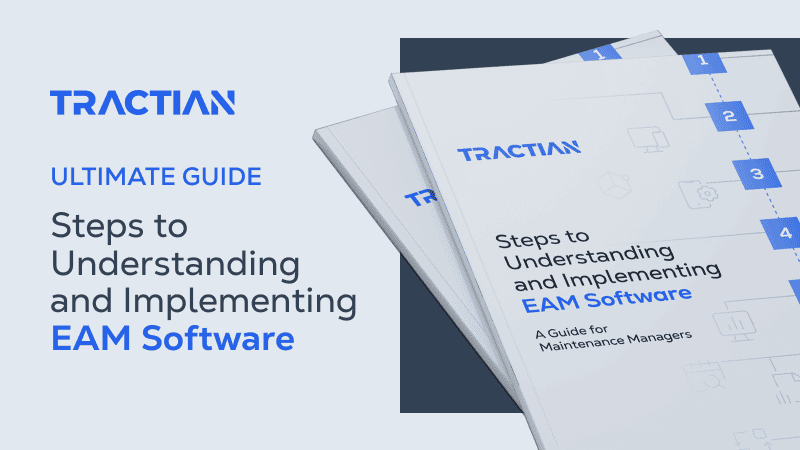Every second counts when an alert hits the floor. Yes, time is critical because something might be breaking. But more importantly, every delay in acknowledging that alert sets a chain of reactions in motion.
During alerts, a slow MTTA (Mean Time to Acknowledge) indicates that consequences more dire than the response time itself are occurring. A slow MTTA means that communication is clogged, priorities are confused, and the frontline teams are consistently one step behind the problem. This leaves a trail of ever-expanding problems and expenses as time grows.
Regardless of how some rightfully wear their MTTA like a badge, it isn’t a vanity metric. It’s the leading indicator of how responsive your maintenance process really is.
It shows how quickly your team sees, understands, and starts working on issues before they escalate. And for the company, it represents your team’s contribution to the bottom line metrics like ROI, uptime, and many more revenue-related measurements.
Yet despite its value, it’s often overlooked in favor of more “technical” KPIs like MTTR (Mean Time to Repair) or failure rates. But that’s a mistake. Because, in most industrial environments, the biggest delays don’t happen when equipment is being repaired. As we’ve described above, they happen before that even starts.
Admittedly, MTTA is frequently overlooked because teams just don’t have an effective way to track this period of time. However, the technology needed to bring this metric into the light is available now. So there’s no excuse to ignore it.
In this article, we’ll break down what MTTA really is, why it matters more than many think, and how to improve it in ways that actually stick.
What is MTTA?
MTTA stands for Mean Time to Acknowledge, which is the average time it takes for your team to recognize and respond to an alert after it’s triggered.
In other words, it measures how long a notification or alert sits untouched before someone on the maintenance team sees it and takes that first step, like logging it into the CMMS, assigning a technician, or validating that it’s a real issue.
This duration of time-how long it takes to acknowledge-is significant. The time between an alert being sent and an acknowledgment often sets the tone for everything that follows. The longer it lingers, the higher the risk of escalation, especially in fast-paced, asset-intensive environments where a single unresolved issue can turn into a full-blown shutdown.
But the MTTA can help you with that, since it doesn’t measure how fast you fix something. Instead, it measures how fast your team starts paying attention.
And when it comes to maintenance reliability, that reaction time can be the difference between minor adjustments and major failures.
Why is MTTA an Effective Metric?
MTTA is an effective metric because responsiveness is a key driver of reliability, among other indicators. MTTA tracks the speed at which your team identifies and starts addressing an issue, at the point of awareness-a period completely distinct from the activities happening during or after the repair.
High MTTA indicates something is amiss: perhaps alerts are buried in cluttered inboxes, perhaps notifications fail to reach the appropriate person, or perhaps there is simply too much noise for teams to prioritize what truly matters. Either way, it signals a gap-not in your tools, but in your workflow.
Low MTTA, on the other hand, indicates that your team is dialed in. It shows that alerts are clear, reach the right people quickly, and trigger action before small problems escalate into larger ones.
Here’s why MTTA matters beyond the maintenance team:
- It reflects alert quality: If you’re acknowledging alerts quickly, it often means your team trusts the signals they’re getting. There’s clarity and confidence in the system.
- It highlights communication efficiency: How fast are alerts routed? How clear are responsibilities? MTTA tells you how streamlined that pipeline really is.
- It improves overall incident resolution: A fast acknowledgement is often the first domino. When it falls quickly, every other step-from diagnosis to repair-has a head start.
MTTA vs. MTTR and MTBF
In reliability circles, MTTR (Mean Time to Repair) and MTBF (Mean Time Between Failures) get most of the spotlight. They’re considered core metrics for maintenance performance. But here’s the thing: MTTA (Mean Time to Acknowledge) occurs before both of them. And it might just be the most overlooked lever in the chain.
To understand how they all connect, let’s break them down:
MTTA - Mean Time to Acknowledge
This is the time from when an alert or incident is first triggered to when someone officially acknowledges it.
It’s the gap between awareness and action. It doesn't mean the issue is being resolved yet. It is only that the team has seen it and is beginning the response process-assigning a ticket, validating the signal, or logging into the CMMS.
A slow MTTA usually means:
- Alerts aren’t reaching the right people fast enough.
- Teams are desensitized due to too many low-value alerts.
- There’s no defined protocol for incident ownership.
MTTR - Mean Time to Repair
Once the issue is acknowledged and work begins, MTTR takes over.
This metric measures the average time it takes to fully resolve a failure, from the start of repair to full operational recovery. It’s traditionally the go-to KPI for maintenance efficiency.
But here’s where things get murky. If you don’t track MTTA separately, you’re baking in unnecessary delay into your MTTR calculations. That means your MTTR might look worse than it actually is because part of that time wasn’t “repair” time at all, it was inactivity.
MTBF - Mean Time Between Failures
This metric tracks the average operational time between two failures of the same asset. It demonstrates asset reliability, which is how long you can count on your equipment to perform without interruption.
MTBF is affected downstream by both MTTA and MTTR. Why? Because poor acknowledgment and slow fixes can contribute to hasty or incomplete resolutions. And when issues aren’t addressed properly the first time, repeat failures tend to follow.
So, Why Does MTTA Deserve More Attention?
Because MTTA is a proactive metric. It gives visibility into the early stages of your incident response chain, long before the wrenches come out. If you can optimize MTTA, you your MTBF from being artificially deflated by recurring issues that weren’t promptly flagged.
Think of it this way:
- Low MTTA = Alerts are seen fast → Prioritization is sharper → Downtime is minimized.
- High MTTA = Alerts linger → Confusion increases → Failures escalate and spread.
In plants running multiple assets with overlapping responsibilities, MTTA becomes the glue that keeps your entire response framework tight. It’s the metric that exposes gaps in visibility, communication, and urgency, before they cost you in downtime or asset damage.
When maintenance teams measure all three-MTTA, MTTR, and MTBF-they get a complete, layered view of operational readiness: how fast they respond, how well they repair, and how long their assets hold up. That’s the real maintenance trifecta.
How to Calculate MTTA
The formula for MTTA is simple, but the insight it provides is critical:
MTTA = Total time between alert and acknowledgment ÷ Number of incidents
You’re measuring the average time it takes for a technician (or any responsible team member) to acknowledge an alert once it’s triggered. Measurement is usually gathered through a CMMS, mobile app, or integrated monitoring platform.
Let’s say over the past month, your plant generated 40 actionable alerts. If the cumulative time between alert trigger and acknowledgment across all those events was 1,200 minutes, your MTTA would be:
1,200 ÷ 40 = 30 minutes
That’s your average delay between when an issue appears and when someone responds to it. Whether 30 minutes is “good” or “bad” depends entirely on your context-asset criticality, system sensitivity, and operational impact.
However, the MTTA metric isn’t valuable unless you track it continuously. You want to see how it trends over time and how it responds to changes in processes, tools, or team structure.
It’s also worth noting that an “acknowledgment” should be clearly defined in your workflow. Is it just viewing the alert? Assigning a work order? Logging the incident? Standardizing that definition is essential for consistent tracking and benchmarking.
How to Reduce MTTA
Lowering MTTA doesn’t start with faster hands, it starts with better visibility and cleaner workflows. Here’s how teams actually move the needle:
1. Streamline Alert Routing
Make sure alerts go straight to the people who need to see them. That means no manual triage, no inbox clutter, and no relying on verbal handoffs. Every second counts, so routing needs to be automatic, targeted, and based on asset ownership or role-based logic.
2. Reduce False Alarms
Alert fatigue kills responsiveness. If your team is flooded with non-critical or low-quality alerts, they’ll start ignoring all of them, including the ones that matter. Review thresholds, tighten filters, and prioritize alerts tied to failure modes, not just out-of-range values.
3. Implement Tiered Notifications
Not every alert needs to be a five-alarm fire. Use escalation rules: minor issues go to techs for review, critical alerts trigger multi-channel pings (text, email, mobile push), and unacknowledged alerts get auto-escalated after a set period.
4. Standardize the Acknowledgment Process
The metric is useless if no one knows what “acknowledge” means. Define the exact steps: who acknowledges, how it’s logged, and what happens next. Then train teams to follow that playbook every time.
5. Centralize Your Tools
The more systems you use to receive alerts, the longer it takes to respond. Pull alerts, work orders, and asset data into a single interface. It reduces the back-and-forth and keeps response times tight.
6. Measure and Surface MTTA Publicly
What gets tracked gets attention. Make MTTA visible on dashboards, weekly reports, and toolbox talks. When teams know it's being monitored and see the impact, they get faster by default.
The right workflows, smart automation, and alert hygiene can shrink acknowledgment times without adding pressure to the team. And when acknowledgment speeds up, the rest of your maintenance chain benefits automatically.

How MTTA Solves Common Security Challenges
In many organizations, security is about networks and firewalls. However, it’s about incident readiness across the entire operation in industrial environments. The faster your team acknowledges a signal, whether it’s a sensor anomaly, unauthorized access, or a potential mechanical failure, the better positioned you are to protect people, assets, and uptime.
From this perspective, MTTA becomes a security control. Let’s examine how this happens:
Quick Identification and Response to Incidents
When a critical asset starts acting abnormally-vibrations spike, temperature drifts, power draw looks off-you don’t always get a second warning. Whether the root cause is mechanical failure or external interference, what happens in the first few minutes is often the most important.
Low MTTA ensures you’re not only collecting data, but acting on it.
It closes the vulnerability window. Alerts are acknowledged quickly, decisions happen sooner, and corrective actions kick in while there’s still time to prevent escalation, especially in scenarios where equipment issues overlap with safety or cybersecurity risks (think smart devices or IIoT gateways).
Streamlining Communication Channels
A slow MTTA often signals a bigger problem: fractured communication. Maybe alerts aren’t routed correctly. Maybe there’s no protocol for who takes ownership. Or maybe people are unsure which platform to use when.
In security-sensitive environments, that kind of delay is unacceptable.
Reducing MTTA forces teams to clarify those communication channels. It demands clean alert hierarchies, real-time escalation paths, and integration between detection tools and response systems, so that when a signal hits, it doesn’t fall into a dead zone.
You end up with leaner workflows, more responsive teams, and tighter control over emerging threats, whether they’re mechanical, digital, or operational in nature.
Improving Mean Time to Acknowledge (MTTA)
Improving MTTA is about removing the roadblocks that slow them down. If acknowledgement is delayed, it's rarely due to negligence. Usually, it's because the alert got stuck in a system, routed to the wrong person, or buried under noise.
To truly bring MTTA down, you need to zoom out. Look at how alerts are detected, how information flows across the team, and how tools support-not hinder-the response.
Lowering MTTA means making it easier for the right person to react immediately.
Influencing Factors on MTTA Performance
Incident Detection and Alerting
The first factor is a foundational one. How are alerts triggered?
- If your detection thresholds are too tight, you’ll flood your team with low-priority signals.
- Critical issues get missed or acknowledged too late if they're too loose.
The key is contextual alerting. Alerts should reflect the operating behavior of each asset, not just arbitrary thresholds. This way, when something fires off, your team knows it’s meaningful. That trust in the alert system directly drives faster acknowledgment.
Also, delay in signal transmission, such as poor connectivity, sensor miscalibration, or platform lag, can skew MTTA. If you’re serious about improving it, audit your full detection pipeline.
Communication and Collaboration
Even the best alerts are useless if no one sees them, or if everyone assumes someone else did. Clear, predefined ownership makes all the difference. Teams need to know:
- Who gets the alert
- Who acts first
- What happens if it’s ignored
The absence of that clarity leads to confusion, redundant effort, or missed escalations. Establishing responsibility matrices, using smart routing rules, and ensuring alerts include actionable context (not just raw data) dramatically shortens the time to first action.
And collaboration doesn’t stop at acknowledgment. When acknowledgment automatically opens a shared thread or task, the resolution process starts rolling immediately, with no extra taps and no meetings needed.
Automation and Tools
This is the real multiplier. Automated routing, filtered notifications, mobile alerts, and CMMS integrations can shrink MTTA from hours to minutes. But only if they’re configured right.
- Tools should be centralized: one platform, one alerting logic, one source of truth.
- Interfaces must be intuitive: acknowledgment shouldn’t require five steps or deep system knowledge.
- Notifications need to be persistent but smart: reminding the right people without turning into spam.
The best systems also give visibility into MTTA performance itself. Dashboards showing real-time and historical MTTA per line, team, or asset help leaders pinpoint exactly where responsiveness is breaking down, and why.
Developing an Effective MTTA Strategy
An effective MTTA strategy starts by treating acknowledgment as a key part of your response pipeline, rather than an afterthought. You can’t just be a number-chaser, though. You need to build a system where signals are trusted, understood, and acted on without delay.
The first step is clarity. Every team member should know exactly what it means to “acknowledge” an alert and who’s responsible for it. Whether assigning a work order, logging a response in the CMMS, or flagging the issue to a lead tech, it must be standardized across shifts and locations.
Without that definition, MTTA becomes a vague metric with no operational value.
Then, you need infrastructure that supports speed without sacrificing control. That means choosing tools that bring alerts into a single stream, filter them based on relevance, and trigger automatic escalation if there’s no response within a set timeframe.
No technician should have to dig through email threads or toggle between platforms just to confirm they’ve seen a critical issue.
But strategy isn’t just systems, it’s also a mindset. MTTA needs to be embedded into your daily ops culture. Don’t let it become a KPI for leadership to track in isolation. Instead, make it a shared commitment across the whole team.
Talk about it during shift handoffs. Make it visible on monitors. Share wins when response times improve. When acknowledgment becomes part of how teams measure their own effectiveness, you don’t need to push performance. It will accelerate on its own.
How Tractian’s CMMS Helps With Your MTTA
Reducing MTTA isn’t just about moving faster, but also about having a system that clears the path for speed.
Tractian’s CMMS is built to do exactly that. Unifying real-time alerts, asset history, and work order execution into a single, connected workspace cuts through the friction that slows acknowledgment down. Alerts don’t get buried. Tasks don’t wait for manual triage. And teams don’t have to guess who’s responsible for what.
Every signal, whether from a sensor, a mobile inspection, or an operator’s note, lands exactly where it needs to, backed by context and asset data, ready for action. That means your team can react immediately and confidently, without hunting for information or switching between systems.
You get visibility into how quickly your operation sees and responds to failures, and not just that failures occurred. This kind of insight takes you further than improving your MTTA to reshaping your entire maintenance rhythm.
Because at the end of the day, faster acknowledgment protects uptime, empowers your team, and keeps operations ahead of failure, not behind it.
This is Tractians' continual guiding mission.. Not just better software. But smarter, faster, and more empowered maintenance, starting from the moment a problem appears-and possibly even before.



